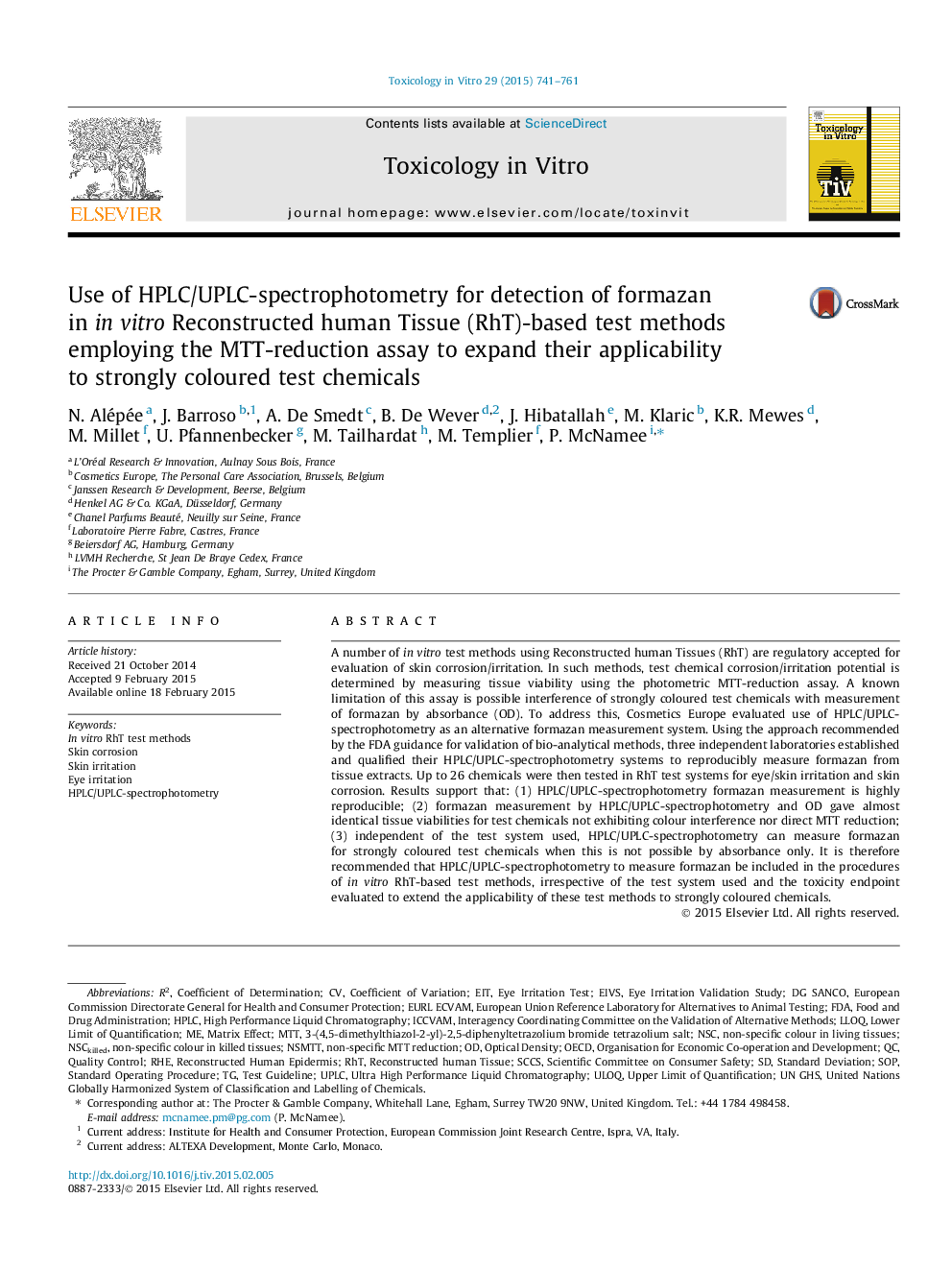| Article ID | Journal | Published Year | Pages | File Type |
|---|---|---|---|---|
| 5861914 | Toxicology in Vitro | 2015 | 21 Pages |
â¢Key qualification parameters defined for HPLC/UPLC-spectrophotometry systems.â¢HPLC/UPLC-spectrophotometry for formazan detection is highly reproducible.â¢High concordance of classification using OD and HPLC/UPLC-spectrophotometry.â¢Applicable for highly coloured chemicals interfering with standard detection method.â¢Applicable to in vitro RhT test methods for eye/skin irritation and skin corrosion.
A number of in vitro test methods using Reconstructed human Tissues (RhT) are regulatory accepted for evaluation of skin corrosion/irritation. In such methods, test chemical corrosion/irritation potential is determined by measuring tissue viability using the photometric MTT-reduction assay. A known limitation of this assay is possible interference of strongly coloured test chemicals with measurement of formazan by absorbance (OD). To address this, Cosmetics Europe evaluated use of HPLC/UPLC-spectrophotometry as an alternative formazan measurement system. Using the approach recommended by the FDA guidance for validation of bio-analytical methods, three independent laboratories established and qualified their HPLC/UPLC-spectrophotometry systems to reproducibly measure formazan from tissue extracts. Up to 26 chemicals were then tested in RhT test systems for eye/skin irritation and skin corrosion. Results support that: (1) HPLC/UPLC-spectrophotometry formazan measurement is highly reproducible; (2) formazan measurement by HPLC/UPLC-spectrophotometry and OD gave almost identical tissue viabilities for test chemicals not exhibiting colour interference nor direct MTT reduction; (3) independent of the test system used, HPLC/UPLC-spectrophotometry can measure formazan for strongly coloured test chemicals when this is not possible by absorbance only. It is therefore recommended that HPLC/UPLC-spectrophotometry to measure formazan be included in the procedures of in vitro RhT-based test methods, irrespective of the test system used and the toxicity endpoint evaluated to extend the applicability of these test methods to strongly coloured chemicals.
